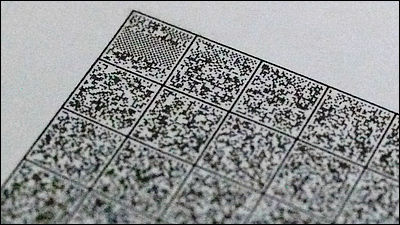A technology that replaces characters with molecular sequences, encrypts them and mixes them into ``ink'' appears, and succeeds in creating a ``secret letter'' that is difficult to decipher

Polymers of molecules By defining the arrangement of 'polymers' and applying the technology to express information such as letters in the 'order of molecules', chemical substances embedded with information are mixed with ink, written as letters, and sent to others. It turned out that it was successfully sent to Information is encrypted and is said to be ``virtually impossible to break even on the fastest computers''.
Molecular Encryption and Steganography Using Mixtures of Simultaneously Sequenced, Sequence-Defined Oligourethanes | ACS Central Science

Scientists hid encryption key for Wizard of Oz text in plastic molecules | Ars Technica
Recently, research is progressing on technology that defines and encodes information based on molecular sequences. For example, DNA, which is composed of elements such as adenine (A), thymine (T), guanine (G), and cytosine (C), converts the four symbols and assigns letters to convert letters to DNA bases. It is hoped that it will be possible to convert it into a 'sequence' and store the information in DNA.

Researchers at the University of Texas at Austin conducted experiments with sequence-defined polymers (SDPs) . SDP is a series of basic units of polymers called 'monomers'. By arranging these in a specific order, it is possible to convey the intended information correctly.
Researchers converted the novel 'Wizard of Oz' into a 256-bit encryption key stored in a commercially available polymer material made of amino acids. I mixed it with ink and wrote a letter that had nothing to do with the novel, and actually mailed it.
The letter was put through a mass spectrometer, revealing the original structure of the polymer material and the encryption key. As a result, he succeeded in reading the contents of the novel correctly.

This is the first attempt to store 256-bit information in SDP, and it is said that it has never stored so much information. If the encryption is done correctly, it seems that it is virtually impossible to break with existing computers. The researchers see this result as a ``scientific revolutionary advance in the field of molecular data storage and cryptography'' and would like to find a way to automate the writing and reading process with robots in the future. Did.
Related Posts:
in Science, Posted by log1p_kr







